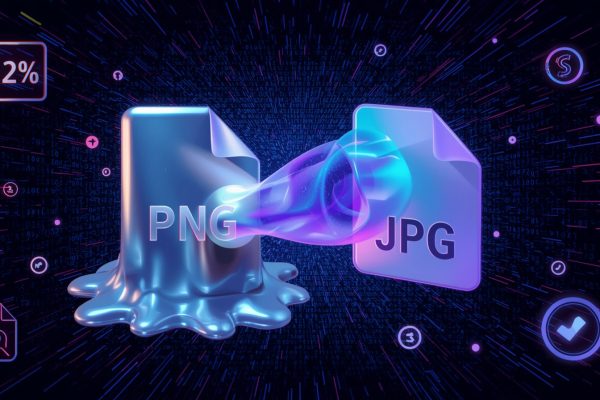In today’s fast-moving global economy, seamless logistics operations aren’t just a luxury—they’re a necessity. From warehouses to last-mile delivery, the need for real-time, data-driven visibility across every stage of the supply chain is critical. But traditional systems often operate in silos, creating delays, blind spots, and inefficiencies. This is where integrated logistics software steps in—bringing end-to-end visibility, better coordination, and operational intelligence.
This article dives deep into how building custom, integrated logistics software transforms operations and ensures businesses can meet the evolving demands of the logistics industry.
What Is End-to-End Visibility in Logistics?
End-to-end visibility refers to the ability to track and monitor all aspects of a product’s journey—from procurement and warehousing to shipping and final delivery—in real-time and from a single unified system. It’s about achieving transparency and synchronization across the supply chain.
Without end-to-end visibility, logistics managers face:
- Inefficient route planning
- Inventory inaccuracies
- Delays in order fulfillment
- Limited tracking capability
- Poor customer experience
Integrated logistics software provides the digital backbone for resolving these issues by unifying all logistics functions under one ecosystem.
Benefits of Integrated Logistics Software
Here are the most impactful advantages of implementing integrated logistics platforms:
1. Real-Time Tracking
Real-time GPS and IoT integrations enable continuous monitoring of shipments, reducing theft, loss, and delays.
2. Improved Decision-Making
Access to consolidated data analytics helps decision-makers respond to disruptions quickly and plan proactively.
3. Automated Workflows
From inventory management to invoicing and documentation, automation reduces manual errors and increases speed.
4. Enhanced Customer Experience
Customers benefit from faster deliveries, accurate ETAs, and complete transparency throughout the order lifecycle.
5. Cost Efficiency
By streamlining warehouse operations, route optimization, and resource allocation, businesses can reduce unnecessary expenses.
How Does Integrated Logistics Software Work?
A well-designed logistics platform acts as a central nervous system, connecting various operational segments into a single digital interface. Here’s how the software works:
1. Warehouse & Inventory Management
Tracks real-time inventory levels, automates reordering, and manages product lifecycles using barcodes or RFID systems.
2. Transportation & Fleet Management
Utilizes GPS, geofencing, and traffic algorithms to optimize routes, reduce idle time, and monitor driver performance.
3. Order Fulfillment
Automates picking, packing, and shipping processes and syncs with ERP or CRM systems for smoother order handling.
4. IoT & Sensors Integration
Collects real-time temperature, humidity, location, and motion data from containers or pallets—especially vital for cold chain logistics.
5. Analytics & Reporting
Dashboards provide operational insights and predictive analytics for better capacity planning, delivery forecasts, and KPI tracking.
6. Third-party Integration
Syncs with external systems like ERP platforms, customs software, and carrier networks to provide unified visibility and coordination.
How to Develop Integrated Logistics Software (Step-by-Step)
Creating effective logistics software requires a methodical approach. Below is a step-by-step process that logistics software development services providers usually follow:
1. Requirements Analysis
- Identify pain points (manual tracking, poor inventory control, etc.)
- Gather input from logistics managers, warehouse staff, and IT teams
- Map out workflows and integration needs
2. System Architecture Planning
- Choose architecture type: cloud-based or on-premise
- Define modules: transport, inventory, order, customer, billing
- Plan integrations with ERP, TMS, WMS, and CRM systems
3. Technology Stack Selection
- Frontend: React, Angular, or Vue.js
- Backend: Node.js, Java, Python
- Database: PostgreSQL, MongoDB
- Cloud/Hosting: AWS, Azure, or GCP
- APIs: RESTful APIs for system interoperability
- AI/ML (optional): Predictive route planning or demand forecasting
4. Development & Customization
- Use agile methodology for iterative builds
- Create customizable dashboards and user interfaces
- Develop rule-based workflows (e.g., auto-reorder triggers, shipment alerts)
5. Testing & QA
- Conduct unit testing, integration testing, and performance benchmarking
- Simulate real-world logistics scenarios
6. Deployment & Training
- Roll out software in phases
- Train users on dashboards, mobile apps, and analytics tools
7. Support & Maintenance
- Offer regular updates and security patches
- Monitor system uptime, latency, and user feedback
Real-Life Use Cases of Integrated Logistics Platforms
1. Healthcare Supply Chains
A hospital chain implemented an IoT-integrated logistics platform to manage deliveries of perishable medications and surgical supplies. Using temperature sensors and real-time dashboards, the hospital reduced waste by 40% and improved delivery times.
2. E-commerce Fulfillment Centers
A large e-commerce retailer deployed custom software to integrate its warehouse, courier partners, and customer service. Automated inventory syncing and last-mile tracking led to a 30% boost in on-time delivery rate and reduced return rates.
3. Global Freight Forwarding
A freight company operating across continents uses AI-based predictive analytics within its logistics software to plan efficient routes based on customs data, weather, and fuel prices. This saved over $500,000 annually in fuel and demurrage charges.
4. Construction & Equipment Delivery
A construction logistics provider used integrated software to manage delivery of materials to multiple active job sites. Real-time dashboards helped in coordinating crane schedules, equipment arrival, and subcontractor timing, reducing project delays by 25%.
Key Features to Include in Your Logistics Software
Here’s a quick checklist of must-have features:
|
Feature |
Purpose |
|
Real-time GPS tracking |
Live location monitoring |
|
Order Management |
Track status and changes |
|
Automated Invoicing |
Reduce manual accounting tasks |
|
Inventory Sync |
Prevent stockouts or overstock |
|
Mobile App |
Remote access for drivers or warehouse staff |
|
Alert System |
Instant notifications for delays or exceptions |
|
Analytics Dashboard |
KPI visualization and trends |
|
Multi-language Support |
Global usability |
|
Role-Based Access |
Data security and accountability |
The Future of Logistics Software
Logistics software is rapidly evolving. Here’s what lies ahead:
- AI and Predictive Analytics for smarter route and capacity planning
- Blockchain for secure, tamper-proof documentation
- Digital Twins to simulate warehouse layouts or delivery routes
- 5G and Edge Computing for ultra-low latency tracking
- Green Logistics Features to calculate and reduce carbon footprints
Conclusion
Building integrated logistics software for end-to-end visibility is not just a technological upgrade—it’s a strategic transformation. From improving efficiency and cutting costs to delivering better customer experiences, the benefits are multi-dimensional.
As businesses scale, having a flexible, custom-built platform ensures you’re ready to meet demand spikes, navigate supply chain disruptions, and stay competitive in an increasingly digital landscape.
Whether you’re a logistics provider, manufacturer, or retailer, investing in logistics software development services today will put you miles ahead tomorrow.







